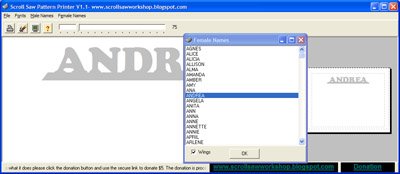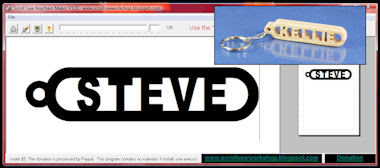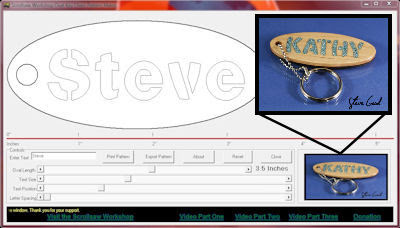The graphic is from vectorportal.com. It is available for personal and commercial use. I only slightly modified it to make it ready to cut.
Tools:
I just answered an email from a guy who is just getting started in the hobby. He wanted to know what tools he needed to get up and making projects on his scroll saw. I know what all you tool fanatics are thinking, "That's like asking a child what he wants for Christmas.". That's exactly the way I feel. I love tools and enjoy having a complete shop. It has taken me 30 years to stock my shop and that's how most woodworkers go about it. We start out small and over time build it out.
The good news is that after the scroll saw and a drill to cut the entries holes, all the other tools fall somewhere between necessity and luxury.
Tolls like the table saw, drill press, planner and band saw all mostly fall in the wood preparation category. If you are buying ready to scroll boards then these tolls become a bit less necessary. If I were looking at building out my shop from scratch I would buy them in this order. Table saw, drill press, planner then the band saw. I could spend hours explaining my choice here but mostly that's just the frequency I use those tools.
The next set of tools would be what I will call finishing tools. The disk sander, belt sander, spindle sander are all tools I use to sand and shape projects. You could also throw in rotary type tools in this group also. This would be a tough call between the disk sander and the belt sander for which I use most. Many belt sanders also have a disk sander so that's going to kill two birds with one stone there. The spindle sander is awesome when you have curves that need to be sanded but I could get by without one if I had to. You can also install a drum sander in a drill press and get the same results.You could substitute a rotary tool for many of the spindle sander jobs. They are not too expensive so you could save some money there.
I'm sure I'm forgetting someones favorite tool but these are just what came to mind while I was answering the email. If you are just getting started don't worry if your workshop is not loaded with tools. I have seen incredibly impressive projects come out of shops with a bare bones setup. Learn to use what you have. If you enjoy having tools then slowly build out your shop.
Try to steer clear of the ultra cheap tools. I know they are tempting but the investment rarely works out. If your budget is really tight go for second hand mid range tools instead of the cheap stuff. Flea markets, auctions, yard sales, Craigs list, and ebay are all places to find tools. Just do your homework before you buy.
One more note about tools. If you are trying to sell your projects then many of the tools I listed become a necessity. They say "Time is money" and no where is that more true than in selling crafts. You absolutely have to move at a quicker pace when you are trying to maximize your profit with craft sales. A tool that may be a luxury for a hobbyist becomes a money maker for a professional. A good example are the vases I have been making. Without good power sanding tools I could make the vase but it would easily double the time. It would only take a few sales to make the purchase of a power sander pay for it's self.

Click book to purchase.
If you would like to have all the patterns in the Scrollsaw Workshop catalog you can buy the first six years DVD and the 2013 update DVD at this link. DVD #1 is $20 and contains over 1,100 patterns. The 2013 update DVD is $7.50 and has another 178 patterns.



























